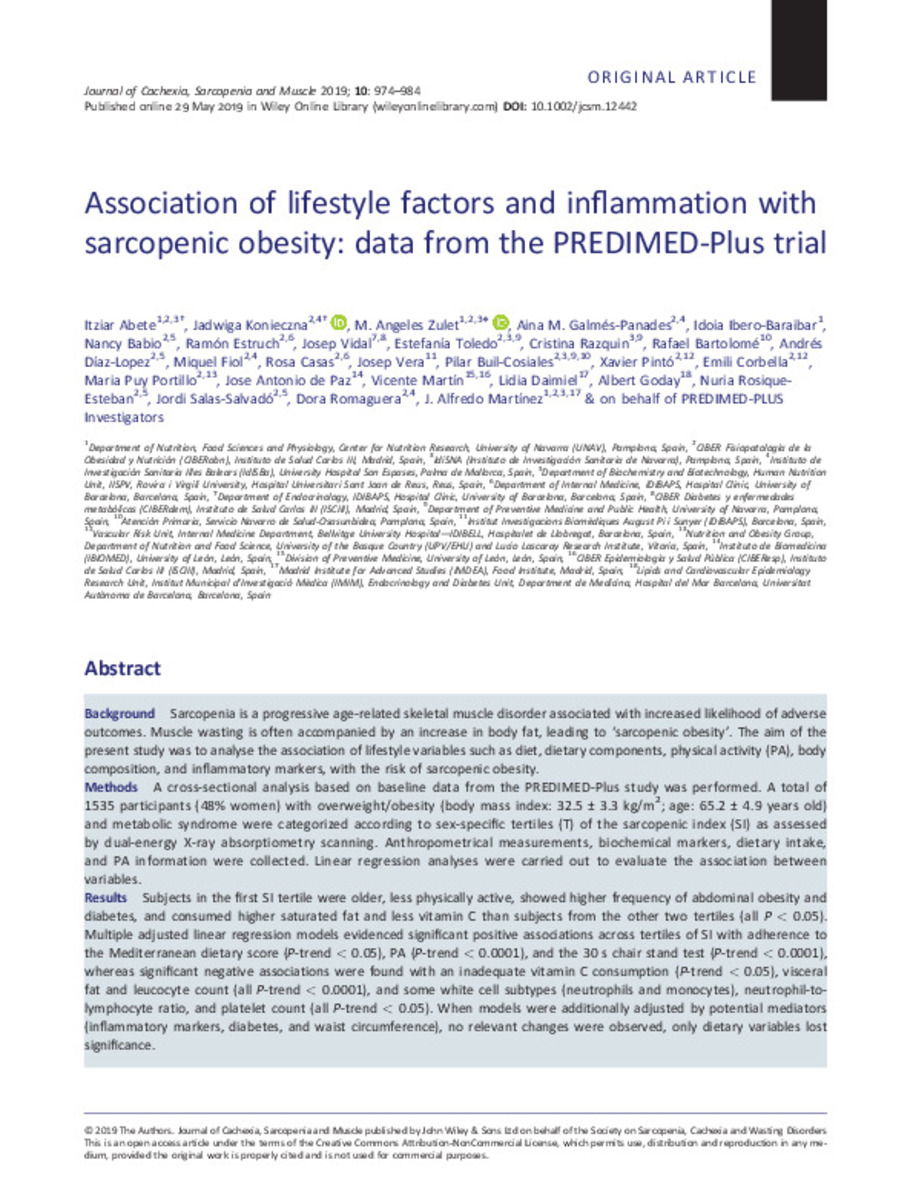Association of lifestyle factors and inflammation with sarcopenic obesity: data from the PREDIMED-Plus trial
Keywords:
Sarcopenic index
Visceral fat
Leucocyte count
Mediterranean diet score
Systemic inflammation
Physical activity
Note:
This is an open access article under the terms of the Creative Commons Attribution-NonCommercial License, which permits use, distribution and reproduction in any medium, provided the original work is properly cited and is not used for commercial purposes.
Citation:
Abete, I. (Itziar); Konieczna, J. (Jadwiga); Zulet, M.A. (María Ángeles); et al. "Association of lifestyle factors and inflammation with sarcopenic obesity: data from the PREDIMED-Plus trial". Journal of Cachexia, Sarcopenia and Muscle. 10 (5), 2019, 974 - 984
Statistics and impact
0 citas en

0 citas en

Items in Dadun are protected by copyright, with all rights reserved, unless otherwise indicated.








